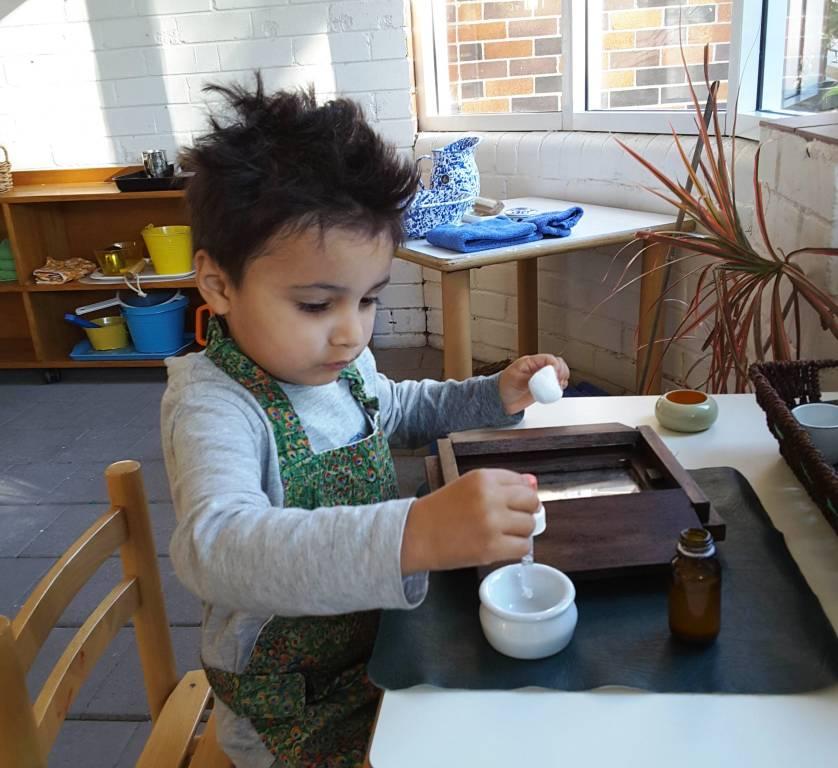When should my child learn to write?
How Montessori goes about teaching writing is distinctly different from mainstream. We start by developing a strong vocabulary and strengthening the hand. We develop the child’s vocabulary first because this will give them a strong word bank to pull from when they do learn to write. Strengthening the fine motor skills of the hand is helpful to the child because there is an art in holding a pencil properly, and if the hand is not ready, it can lead to a lifetime of poor technique.
So as soon as a child shows interest in letters and words, we begin to teach the child to write. This occurs before they learn to read. If you think about it in a considered way, when we read, we are hearing another person’s thoughts and when we write, we are sharing our own thoughts. Our ultimate aim with learning to write is to be able to beautifully express ourselves using language.
So how does Montessori go about teaching writing?
There is a considered sequence of Montessori materials and lesson presentations that prepare the child for writing and takes advantage of their natural tendency to engage physically with learning.
Children love to move, and learn by doing. They learn best by physically interacting with the world. Montessori takes advantage of their natural tendencies to do so.
Step1 - Sound Games: we begin with helping the child realise that words are made up of sounds and to develop the ability to isolate them.
Step 2 - Sandpaper Letters: Next is the sensory experience of tracing the textured symbol with their fingers repeatedly until the shape and sound of the letter becomes a part of the child's muscle memory.
Step 3 - Moveable alphabet: Once the child has mastered the letter sound they move on to the moveable alphabet, beginning to put the letters and sounds together. Starting with simple words like ‘is’, ‘me’, ‘the’; and slowly building up to more complex words. The benefit of the moveable alphabet is that it allows children to begin ‘writing’ before they have developed fine-motor skills to control a pencil.
Step 4 - pencil grip exercises: In conjunction with Step 1 to 3, building hand strength and the fine motor skills required to hold a pencil are introduced along the way. In our Montessori classroom, the children find many specific opportunities to exercise their pincer grip, for example, by working with blocks, eye droppers, tweezers and metal insets. They start with picking up small pom poms and then progress to hard surfaces like beads and picking up the small points on the metal insets. Metal insets are a writing building activity made of eye catching coloured metal puzzle pieces. The weight of them makes the child pinch their fingers tightly together to grip the piece. Once foundational hand strength is developed, children start to work with pens and pencils.

After mastering the skills associated with producing written letters and words, reading naturally follows. It’s such a wonderful journey, the discovery of writing and when they see the words on a page they are so excited to decode their meaning.
Form more reading on language skills visit our blogs and other helpful resources include:
5 Reasons Why Writing Helps Early Reading